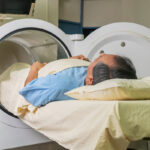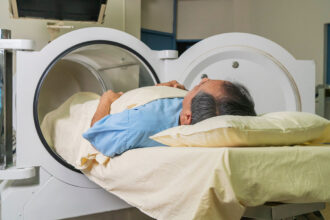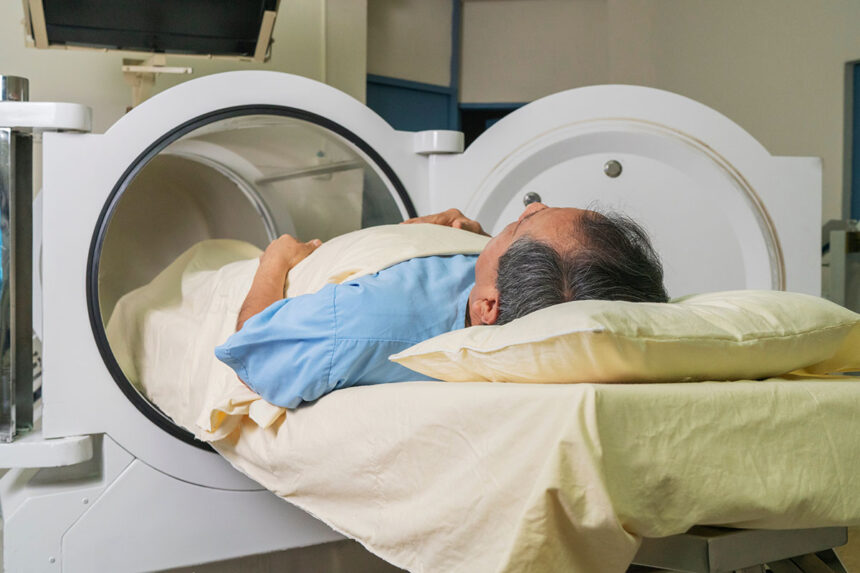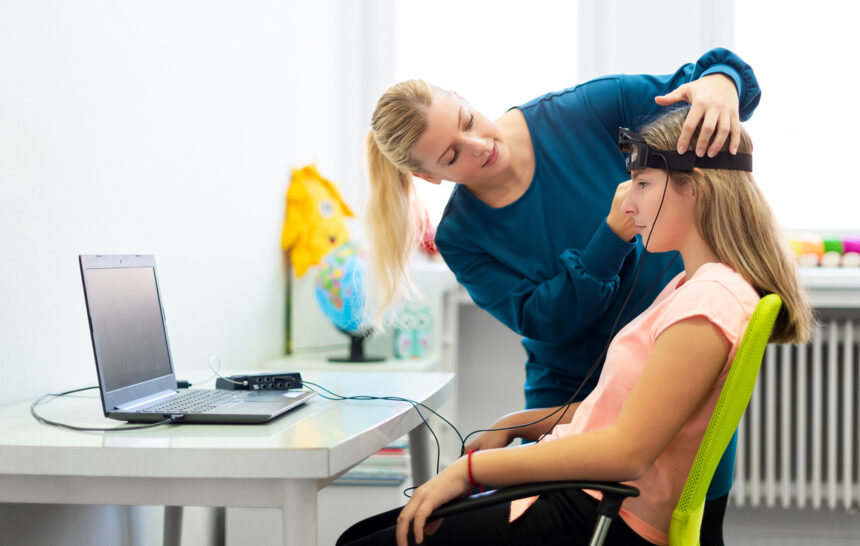Technology has transformed the way we understand and manage our health. The Quantified Self movement—powered by wearable devices like Fitbit, Oura Ring, and Apple Watch—enables individuals to track key health metrics such as sleep, physical activity, heart rate variability (HRV), and stress levels. This real-time data provides valuable insights, helping individuals optimize their performance, longevity, and overall well-being.
What gets measured gets managed. Self-tracking empowers individuals to take control of their health through data-driven insights.
Gary Wolf
In his TED Talk “The Quantified Self,” Gary Wolf, co-founder of the movement, explains how self-tracking empowers people to take control of their health by using data to make informed decisions. Meanwhile, research published in Big Data (Swan, 2013) highlights how self-tracking is revolutionizing healthcare, personal fitness, and cognitive performance.
This article explores the science behind self-tracking, the benefits of wearable technology, and how to use data for optimal health and peak performance.
What Is the Quantified Self?
The Quantified Self (QS) is a movement that promotes self-tracking and data-driven decision-making to improve health, productivity, and personal growth. It involves:

✅ Monitoring biometrics (heart rate, sleep patterns, calorie intake, blood glucose)
✅ Analyzing data trends to optimize habits and behaviors
✅ Using wearable devices and apps to collect real-time health insights
The goal is to use objective data to make better lifestyle choices and improve physical, mental, and emotional well-being.
📖 Read more: The Science of Self-Tracking
How Wearable Devices Enhance Self-Tracking
Advancements in wearable technology have made continuous health monitoring accessible to everyone. Devices like Fitbit, Oura Ring, Garmin, and WHOOP provide real-time data on:

🔹 Sleep Patterns – Tracks sleep stages (REM, deep, light), total sleep time, and sleep quality.
🔹 Heart Rate Variability (HRV) – Measures autonomic nervous system balance, stress levels, and recovery.
🔹 Activity and Fitness Levels – Monitors steps, calories burned, VO2 max, and exercise intensity.
🔹 Blood Oxygen Levels (SpO2) – Provides insights into respiratory health and recovery.
🔹 Stress and Recovery Metrics – Evaluates daily readiness based on heart rate trends and activity load.
These biometric insights allow individuals to adjust their routines for better performance, recovery, and overall health.
📖 Explore the findings: Wearable Devices and Health Tracking
Key Benefits of Self-Tracking
1. Optimizing Sleep for Better Recovery and Performance 😴
Sleep is one of the most critical factors in cognitive function, physical recovery, and emotional balance. Wearable devices help improve sleep by:
✅ Tracking sleep stages, revealing how much time is spent in REM and deep sleep.
✅ Monitoring sleep disruptions, identifying factors affecting rest quality.
✅ Optimizing bedtime routines, based on HRV and sleep trends.
Studies show that improving sleep efficiency through self-tracking enhances memory retention, athletic performance, and mood regulation.
📖 Read more: Self-Tracking and Sleep
2. Heart Rate Variability (HRV): The Key to Stress Management ❤️
HRV measures the variation in time between heartbeats—a powerful indicator of:
✅ Autonomic nervous system balance (stress vs. recovery).
✅ Fitness and cardiovascular health, predicting overtraining or illness.
✅ Emotional resilience, as HRV is linked to mindfulness and stress response.
Research suggests that higher HRV is associated with better overall health, faster recovery, and improved cognitive function.
📖 Discover more: HRV and Stress Management
The future of healthcare is personalized, and self-tracking technology is bridging the gap between prevention and optimization.
Dr. Eric Topol
3. Personalizing Fitness and Performance Goals 🏋️♂️
Self-tracking allows individuals to customize workouts based on real-time feedback. Benefits include:
✅ Optimizing training load, preventing overtraining and injuries.
✅ Measuring recovery, adjusting intensity based on HRV and readiness scores.
✅ Tracking VO2 max and endurance levels, improving athletic performance.
Athletes and fitness enthusiasts use WHOOP, Garmin, and Apple Watch to fine-tune their training routines for peak performance.
📖 Explore the findings: Self-Tracking and Fitness
4. Enhancing Productivity and Cognitive Performance 🧠
Self-tracking isn’t just about physical health—it can also boost mental clarity and productivity. Techniques include:
✅ Monitoring focus and attention spans, using tools like brainwave tracking (Muse headband).
✅ Optimizing work and rest cycles, based on ultradian rhythms.
✅ Using biofeedback to enhance mindfulness and reduce cognitive fatigue.
📖 Read more: Self-Tracking and Cognitive Enhancement
5. Disease Prevention and Early Detection 🏥
Self-tracking enables early detection of health risks, such as:
✅ Irregular heart rhythms, identifying potential heart disease (Apple Watch ECG).
✅ Blood sugar fluctuations, useful for diabetes management (Continuous Glucose Monitors – CGMs).
✅ Oxygen saturation drops, signaling respiratory issues (Oura Ring, Fitbit SpO2 sensors).
By analyzing health trends over time, self-tracking can help detect warning signs before they develop into chronic illnesses.
📖 Discover more: Health Monitoring with Wearables
How to Get Started with Self-Tracking 🔍

1️⃣ Choose the Right Wearable Device – Match your goals (sleep, HRV, fitness, stress) with the best tracker.
2️⃣ Set Clear Objectives – Focus on improving sleep, exercise efficiency, or stress management.
3️⃣ Analyze Your Data Trends – Look for patterns in HRV, sleep quality, and activity levels.
4️⃣ Adjust Lifestyle Habits – Make evidence-based changes based on tracked insights.
5️⃣ Avoid Data Overload – Focus on actionable metrics instead of obsessing over numbers.
📖 Learn more: Beginner’s Guide to Self-Tracking
Potential Risks and Ethical Considerations ⚠️
While self-tracking provides numerous benefits, there are some risks to consider:
❌ Data Privacy Concerns – Wearable devices collect sensitive health data that may be shared with third parties.
❌ Obsession with Numbers – Overanalyzing metrics can lead to unnecessary stress or orthorexia-like behavior.
❌ Accuracy Limitations – Not all wearable sensors provide 100% precise readings.
📖 Explore privacy policies and ethical concerns: Data Security in Self-Tracking
Final Thoughts: Is Self-Tracking Worth It? 🤔
Recent research confirms that self-tracking can help optimize health, fitness, and mental performance by:
✅ Enhancing sleep and recovery 😴
✅ Improving stress management with HRV tracking ❤️
✅ Personalizing workouts for peak athletic performance 🏋️♂️
✅ Boosting cognitive function and productivity 🧠
✅ Detecting early signs of health risks 🚨
The best part? Self-tracking turns health optimization into a data-driven process, allowing individuals to take charge of their well-being with real-time insights.
⏳ Recent Insights into The Quantified Self: How Self-Tracking Can Optimize Health and Performance 📊✨
The Quantified Self movement, powered by wearable technology like Fitbit, Oura Ring, and WHOOP, is revolutionizing personal health by providing real-time data on sleep, activity, heart rate variability (HRV), and overall wellness. By analyzing these biometrics, individuals can optimize performance, enhance recovery, and make data-driven health decisions.
Recent research has uncovered fascinating insights into how self-tracking can improve long-term health outcomes and peak performance.
“Wearable Devices Optimize Sleep and Recovery” 😴📈
A study published in Big Data found that self-tracking sleep metrics can significantly improve rest quality by:
✅ Analyzing sleep cycles (REM, deep, and light sleep) for better recovery
✅ Detecting sleep disruptions and lifestyle factors affecting rest
✅ Providing personalized insights to optimize bedtime routines
These findings confirm that tracking sleep patterns with devices like Oura Ring and Apple Watch can enhance cognitive function, energy levels, and overall health.
📖 Read more: Self-Tracking and Sleep Optimization
“Heart Rate Variability (HRV) Tracking Improves Stress Management” ❤️🔬
HRV—a key marker of nervous system balance and stress resilience—is now being widely used for:
✅ Monitoring recovery and readiness for exercise or mental tasks
✅ Detecting early signs of stress, fatigue, and burnout
✅ Improving mindfulness and relaxation through biofeedback techniques
Studies show that higher HRV is linked to better stress management, emotional regulation, and overall longevity.
📖 Explore the findings: HRV and Self-Tracking
“Activity and Fitness Tracking Enhances Performance and Injury Prevention” 🏋️♂️📊
Fitness trackers provide real-time insights into exercise intensity, movement efficiency, and recovery, helping individuals:
✅ Optimize workout routines based on strain and exertion levels
✅ Track VO2 max and cardiovascular endurance for peak performance
✅ Prevent overtraining by monitoring recovery metrics like HRV and resting heart rate
📖 Read the full article: Wearable Tech for Fitness Optimization
“Self-Tracking Enhances Cognitive Function and Productivity” 🧠📅
Data-driven approaches are now being used to boost mental clarity and productivity by:
✅ Analyzing focus patterns and optimizing work cycles
✅ Using biofeedback to improve attention and reduce cognitive fatigue
✅ Aligning work and rest schedules with ultradian rhythms
📖 Discover more: Self-Tracking for Mental Performance
“Health Monitoring with Wearables Detects Early Signs of Illness” 🏥📉
Self-tracking technology is now playing a crucial role in preventative healthcare, allowing individuals to:
✅ Monitor blood oxygen levels (SpO2) for respiratory health
✅ Detect irregular heart rhythms (ECG) with Apple Watch and other wearables
✅ Track blood glucose levels in real-time using continuous glucose monitors (CGMs)
📖 Learn more: Self-Tracking and Disease Prevention
Final Thoughts: Should You Use Self-Tracking to Optimize Health? 🤔
Recent studies confirm that self-tracking can help individuals:
✅ Improve sleep quality and recovery 😴
✅ Optimize stress management through HRV tracking ❤️
✅ Enhance fitness and prevent injuries 🏋️♂️
✅ Boost cognitive function and productivity 🧠
✅ Detect early signs of health risks 🚨
The best part? With wearable devices and AI-powered analytics, self-tracking turns health optimization into a science-backed, data-driven approach to wellness.
💡 Do you use wearable devices for self-tracking? What health metrics do you monitor? Let’s discuss in the comments! ⬇️😊























